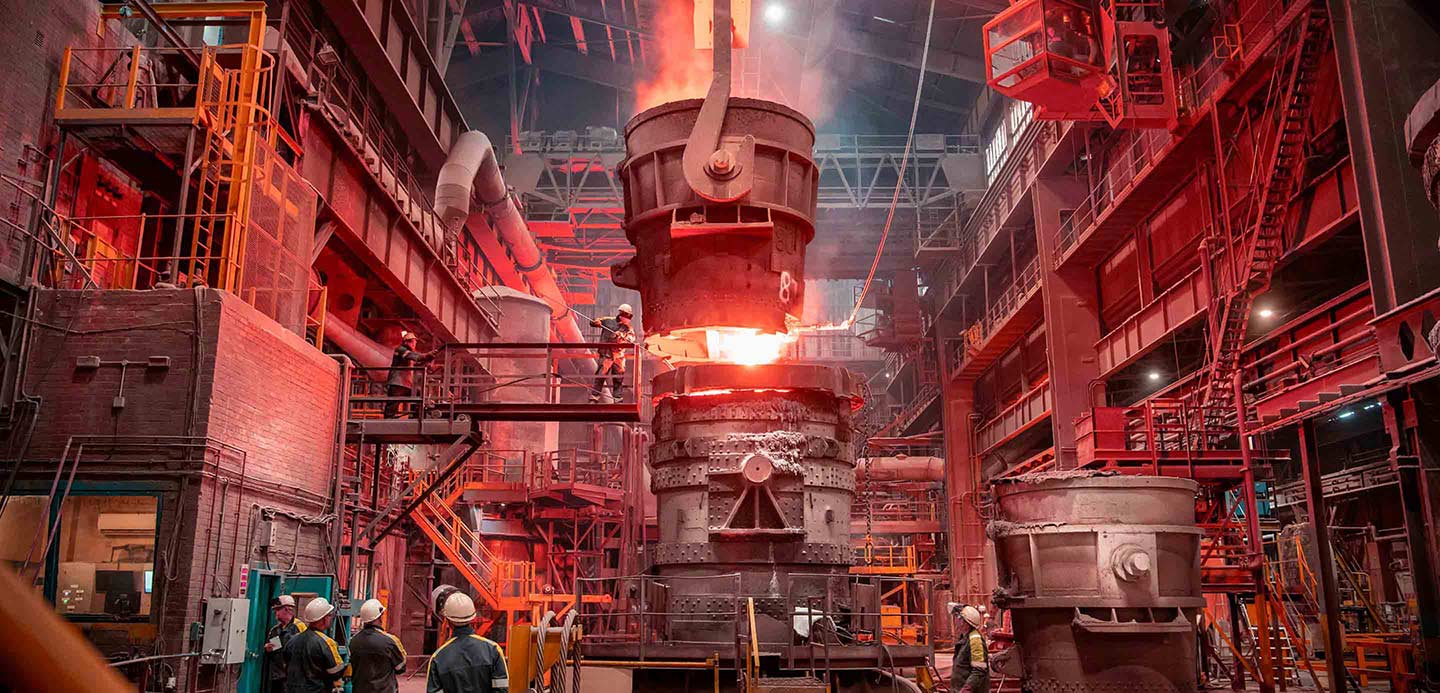- Article

- Infrastructure and Sustainable Finance
- Transition to Net Zero
- General Sustainability
- Supply chain
Metals and minerals: Turning supply gaps into investment opportunities
The global net zero transition will require a huge quantity of industrial metals and minerals. How can supply meet the fast-growing demand?
The energy transition is transforming the mining and resources sector, as the focus shifts to providing the critical metals and minerals needed for clean energy technologies. To keep pace with the goals of the Paris Agreement, the world will need to ramp up investment in these resources to head off a looming supply gap.
The startling reality is that as many as 250 new mines will be needed to meet the expected demand for metals like copper, lithium, nickel, steel and many other resources, according to a recent report from the Energy Transitions Commission (ETC).
We gathered a panel of experts to explore key questions such as which supply chains are most at risk of a shortage of materials, how the materials sector is working to expand production and where it is securing the finance to do so.
Listen now
To hear more on this topic, listen to our latest episode where we explore the question of whether demand for key natural resources can keep up with demand, as well as opportunities in the minerals and materials space with guest speakers Leonardo Buizza, Lead Supply Chains and Materials Analyst, The Energy Transitions Commission, Sophie Lu, Global Head of Heavy Industry Decarbonisation, HSBC, and Michael Willoughby, Global Head of Metals, Mining and Transition Materials, HSBC. Listen now on HSBC Talks Business via Apple Podcasts, Spotify or wherever you get your podcasts.
Supply/demand dynamics
There are two broad “buckets” of materials required, says Leonardo Buizza, lead supply chains and materials analyst at the ETC: those needed across multiple sectors, such as aluminium, steel and copper; and those that are specific to individual clean energy technologies, like the lithium or cobalt in EV batteries, or the rare earths used in electric motors and wind turbines.
While there will be a need to increase extraction and refining of these materials to meet rising demand, Buizza added, it will ultimately mean a shift to a more sustainable, lower-emission energy system that will have much less impact on the environment.
Another point of pushback from those concerned about the sustainability of the clean energy transition is that there are not enough materials to meet future demand. That is a myth, he said. “We've got more than enough lithium, copper and the rest of it to meet future demand through to 2050.”
However, “the key challenge is scaling up annual supply quickly enough to meet the growing demand”, Buizza highlights, and the picture varies depending on the material, with ensuring sufficient supplies of copper and lithium, for instance, looking more challenging than for cobalt and nickel.
Investment uncertainty
A key issue is not only whether mineral and metal resources exist, but whether it is technically and economically feasible to extract them, says Sophie Lu, Global Head of Heavy Industry Decarbonisation at HSBC. Some governments won’t offer mining permits if the materials cannot be extracted in a sustainable manner.
Also acting as a major constraint on supply is the availability of refining and processing technology, where China is leading, commented Michael Willoughby, Global Head of Metals, Mining & Transition Materials at HSBC.
All this has a knock-on effect on the availability of financing, as it requires investors to understand which types of reserves are worth investing in. That level of sophistication is often lacking, he added.
What’s more, Western listed mining companies have a persistently high cost of equity capital which reduces risk appetite in greenfield project and processing technology investments, says Willoughby. That, combined with a deficit in skilled mining labour, geopolitical tensions, commodity price volatility and ESG-related complexity, create uncertainty around the sector.
“Global generalist investors simply don’t have the economic incentive or industry background to disproportionately over-weight the sector” he added.
As a result, the funding is coming from sources with “a low cost of capital and higher appetite for risk”, such as sovereign wealth funds, South Korean battery companies, Japanese trading firms, Chinese tech companies – and, importantly, retail investors who are much more prevalent in emerging equity markets.
Action by materials producers
As for the practical steps that the ETC recommends materials producers and consumers can take, in addition to building new mines to expand supply, they should be diversifying mining supplies and especially refining processes.
All the while, miners and materials producers need to monitor and manage the environmental and social impacts of their operations, says Buizza. This includes decarbonising the production of key materials – especially steel and aluminium – and ensuring that local communities experience as many benefits and as little environmental impact as possible.
To build out the pipeline of production, the level of investment in metals mining (excluding gold and iron ore) needs to rise from around USD50 billion to USD70 billion a year between now and 2030. Faster planning and permit procedures are also necessary, as are improvements in supply chain infrastructure, skills and expertise, Buizza added.
HSBC’s recent Transition Pathways survey of 375 companies in the industrials and chemicals sector found that spending on transition initiatives is increasing: 35% are spending more than 10% of their capex on the net zero transition, and 54% plan to do so in 2-3 years’ time.
Lu noted that the return on that spending will be an important factor in increasing this flow of investment.
“We found that 56% of steel producers expected to be able to earn a green premium for their products,” says Lu. “Yes, they might spend more to produce a cleaner and more ESG oriented product, but they expect to be rewarded for doing so.”
Where’s the money?
Financing is clearly necessary for all this. Providing more and better incentives will be key, says Willoughby, adding that institutions are starting to provide capital at lower rates of return to projects that will have a meaningful impact – particularly in technology that is scalable.
Governments are starting to price carbon, for example, in the EU the existing Emissions Trading Scheme includes a tax on carbon emissions from heavy industrial sectors such as aluminium, which incentivises greener production of the metal. The phasing in of carbon border adjustment mechanisms, to apply this carbon tax to imports as well, will also help level the playing field with imported materials – and incentivise lower-emissions production abroad.
Consumer pressure is also important, to ensure that auto companies, for instance, pay a green premium for steel and other responsibly sourced materials, says Willoughby.
For Lu, it is important for that kind of pressure not to result in the exclusion of sections of the industrial supply chain, where companies are cut off from the financing and investment needed for their transition. All companies, she says, need to make decarbonisation and ESG performance part of business as usual.
“We need to be engaging with the whole global supply chain,” says Lu. “A segmentation or fragmentation of the supply chain, where only some parts of it are climate-oriented, is not helpful to anyone.”
Willoughby agreed with the need to mobilise financing for the whole ecosystem.
“At the end of the day, the quickest way to transition is to incentivise private investment”, especially from Western capital markets, he said. “Solving that last piece of the puzzle is the key to scaling capital and broadening the industrial supply chains sufficiently to meet the important transition targets increasingly being set by society.”
Today we finance a number of industries that significantly contribute to greenhouse gas emissions. We have a strategy to help our customers to reduce their emissions and to reduce our own. Find out more: https://www.hsbc.com/who-we-are/our-climate-strategy
Transition Pathways: Industrials and Chemicals
Explore more of the findings and insights on the industrials and chemicals sector.

For HSBC’s Transition Pathways survey, HSBC has worked with Kantar, a data, insights and consulting company. The survey is not wholly-representative of HSBC’s customer base and covers respondents across 375 key financial decision makers from businesses operating in the chemicals and industrials sector, comprising Discovery and Extraction (138 businesses), Processing (166 businesses) and Manufacturing (71 businesses). Key sub-sectors that were further identified were Chemicals and Plastics (74), Construction and Building Materials (68), Paper, Forestry and Glass (65), Steel (54) and other metals and minerals (43). Businesses were located in Europe (91), Asia (102), the Middle East (67) and North/Central America (115). Overall, 71 (19%) had a turnover below $50m, 87 (23%) had a turnover between $50 and $499m, 84 (22%) had a turnover between $500m and $2.5bn and 133 (36%) turnover in excess of $2.5bn. 110 (27%) had been established for less than 10 years and 265 (73%) for more than 10 years. Data was collected through an online questionnaire and the survey ran from 14 July to 1 August 2023.
In preparing this survey, HSBC has relied upon available data, information and responses given at the time of writing. This report should not form the basis of any third party’s decision to undertake, or otherwise engage in, any activity and third parties do not have any right to rely on it. Neither HSBC nor Kantar accept any duty of care, responsibility or liability in relation to this research or its application or interpretation, including as to the accuracy, completeness or sufficiency of it or any outcomes arising from the same.





